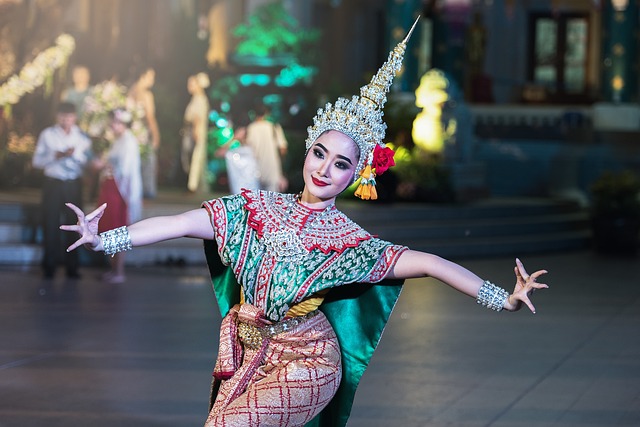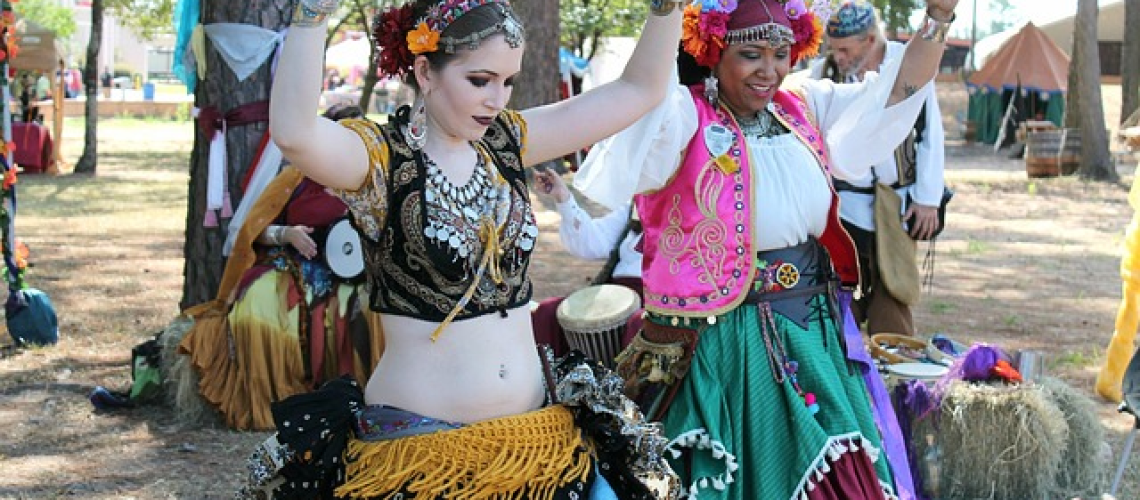In the realm of Middle Eastern dance, Raqs Baladi holds a significant place as a traditional and culturally rich art form. With its origins deeply rooted in ancient Egypt, this dance style has evolved over centuries, encompassing various techniques and symbolic meanings. It is estimated that Raqs Baladi has been performed for over 2,000 years, captivating audiences with its mesmerizing movements and expressive storytelling.
Raqs Baladi carries immense significance within Middle Eastern culture, acting as a symbol of femininity, empowerment, and community. This traditional dance form embraces the essence of everyday life in Egypt, depicting narratives of love, joy, and struggle through rhythmic footwork and graceful gestures.
The artistry of Raqs Baladi lies not only in its physicality but also in its ability to evoke emotions and connect with audiences on a profound level. Dancers utilize intricate hip movements, delicate arm positions, and vibrant costumes to captivate spectators.
Through an exploration of the origins, symbolism, and artistic elements of Raqs Baladi, this article aims to shed light on the beauty and cultural significance of this enchanting dance form.
Key Takeaways
- Raqs Baladi is a traditional Middle Eastern dance style originating from ancient Egypt.
- It has been performed for over 2,000 years and showcases mesmerizing movements and expressive storytelling.
- Raqs Baladi symbolizes femininity, empowerment, and community within Middle Eastern culture.
- The dance form incorporates intricate hip movements, delicate arm positions, and vibrant costumes.
Origins and History of Raqs Baladi

The origins and history of Raqs Baladi can be traced back to ancient Egyptian folk dances, which have evolved over centuries to become a vibrant and expressive form of cultural heritage. Cultural evolution has shaped Raqs Baladi, as it incorporates elements from various regions in Egypt. This dance style has been influenced by the diverse traditions found within the country, resulting in regional variations that add richness and complexity to the overall art form.
Raqs Baladi’s roots can be found in rural communities where women would gather during celebrations and perform traditional dances. These early forms of dance were characterized by earthy movements, grounded footwork, and fluid upper body isolations. As urbanization spread across Egypt, Raqs Baladi began to adapt to its new surroundings. The influx of different cultures and influences led to a fusion of styles, incorporating elements from Bedouin tribes, Nubian communities, and other neighboring countries.
Regional variations within Raqs Baladi further highlight its evolutionary nature. Each region in Egypt has developed its own distinct characteristics, reflecting the unique customs and traditions of that area. For example, dancers from Upper Egypt often incorporate more acrobatic moves into their performances while those from Alexandria may emphasize graceful arm movements inspired by classical ballet.
The origins and history of Raqs Baladi stem from ancient Egyptian folk dances that have undergone cultural evolution over time. Regional variations play a significant role in shaping this art form into a diverse expression of cultural heritage throughout Egypt.
Significance and Symbolism in Raqs Baladi

Symbolism plays a crucial role in the traditional Egyptian dance known as Raqs Baladi, which is deeply rooted in folk traditions and holds significant cultural value. This dance form utilizes gestures and movements to convey deeper meanings, making it more than just a physical expression. Symbolism in Raqs Baladi allows dancers to communicate emotions, stories, and cultural heritage through their movements.
One of the key aspects of symbolism in this dance style is the use of hand gestures. For example, raising one’s arms above the head can symbolize openness and freedom, while holding them closer to the body signifies protection or modesty. Additionally, various facial expressions are used to depict specific emotions or narratives within the dance.
Furthermore, Raqs Baladi often incorporates props such as veils or finger cymbals that hold symbolic significance. Veils can represent femininity and grace, while finger cymbals add rhythmic elements to accentuate certain movements.
Overall, symbolism in Raqs Baladi serves as a means of preserving cultural heritage by conveying stories and emotions through movement. It allows for a deeper connection between dancers and audiences by creating an intimate understanding of the values and traditions embedded within this traditional Egyptian dance form.
The Artistry of Raqs Baladi

An examination of the artistry present in the traditional Egyptian dance known as Raqs Baladi reveals a multi-dimensional form that combines precise technique with emotional expression. Raqs Baladi is characterized by its fluid and sinuous movements, which showcase the beauty of movement and evoke a sense of grace and sensuality. The dancers use their entire body to express a wide range of emotions, from joy and happiness to sadness and longing.
One aspect that contributes to the artistry of Raqs Baladi is the use of improvisation. Dancers must have a deep understanding of the music and be able to interpret it in their movements, allowing them to express their emotions in real-time. This skill requires years of practice and an intuitive connection with the music.
To illustrate the emotional expression inherent in Raqs Baladi, I have created a table below:
| Emotion | Movement |
|---|---|
| Joy | Spirited shimmies |
| Sadness | Slow undulations |
| Longing | Delicate arm movements |
This table demonstrates how different movements are used to convey specific emotions, adding depth and nuance to the dance. By combining precise technique with emotional expression, Raqs Baladi becomes a captivating art form that engages both the dancers and audience on an intimate level.
Frequently Asked Questions
Are there any specific costumes or attire that dancers wear when performing Raqs Baladi?
Traditional raqs baladi costumes are a vivid embodiment of cultural heritage, blending exquisite fabrics, vibrant colors, and intricate embellishments. These costumes have evolved over time, incorporating modern elements while staying true to their traditional roots. Cultural influences play a significant role in the design of these costumes, ensuring that they reflect the rich history and diverse traditions associated with raqs baladi.
Are there any specific musical instruments used in Raqs Baladi performances?
Musical instruments play a crucial role in raqs baladi performances. Traditional instruments such as the tabla, mizmar, and accordion are commonly used. The music adds cultural significance and enhances the overall experience for both performers and audiences.
Is Raqs Baladi typically performed in groups or individually?
Raqs baladi is performed both individually and in groups, reflecting the diverse cultural practices of this dance form. Its history and origins can be traced back to various regions, each contributing their own unique styles and techniques.
How long does it take to learn and master Raqs Baladi?
Improving technique in raqs baladi involves regular practice, seeking professional instruction, and studying the cultural context of the dance. Common mistakes to avoid include improper posture, lack of fluidity, and inadequate understanding of musicality and expression.
Are there any specific training or fitness requirements for practicing Raqs Baladi?
Training requirements for practicing raqs baladi include learning basic dance techniques, such as isolations and shimmies, as well as specific movements like hip drops and twists. Fitness requirements involve developing strength, flexibility, and endurance to perform the dance movements effectively.
